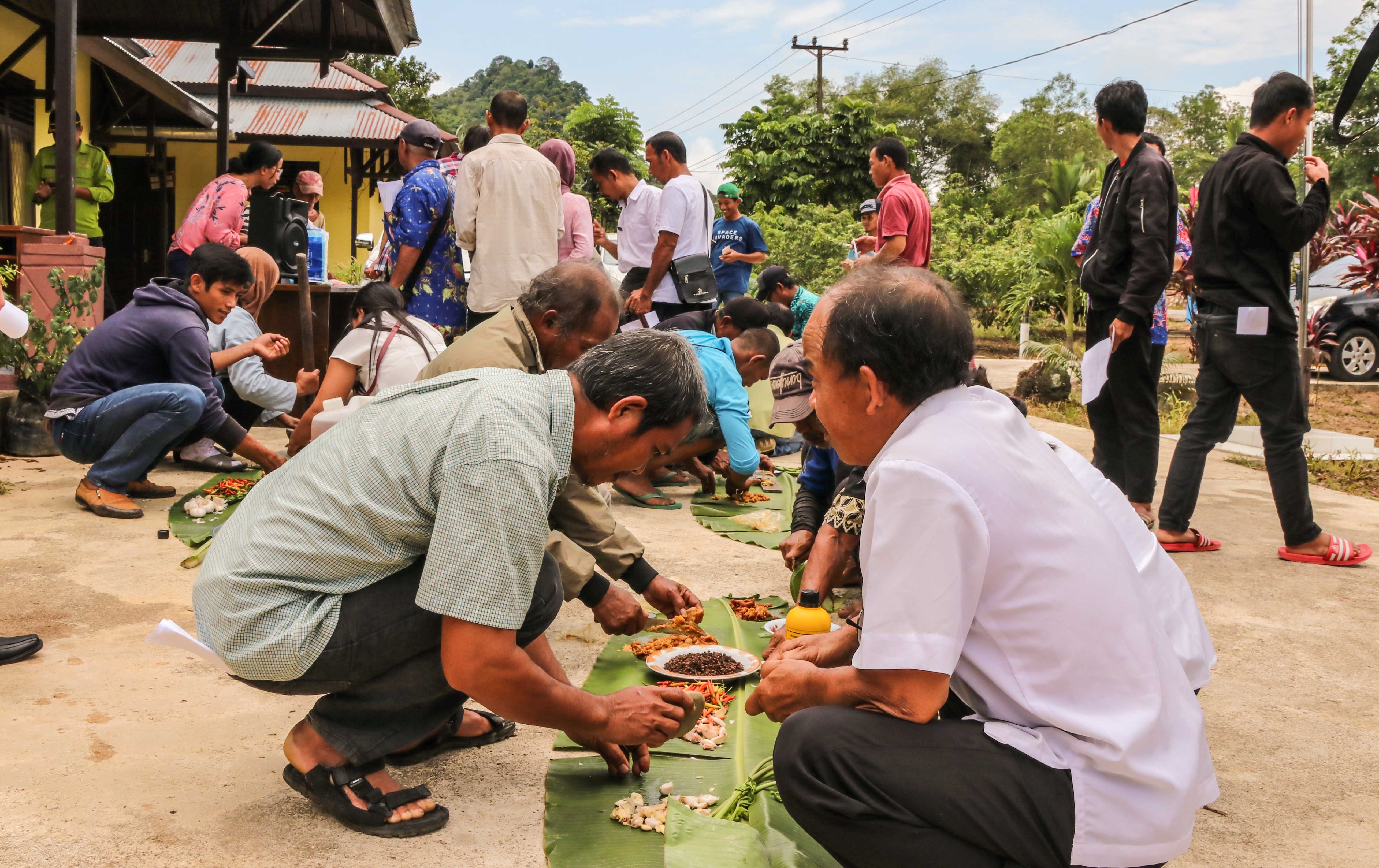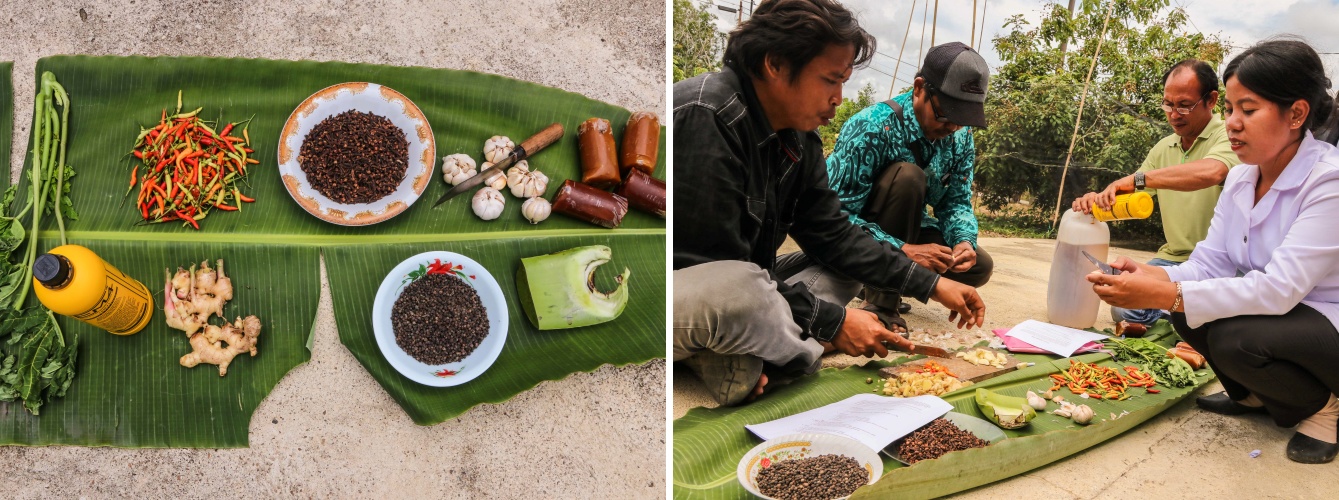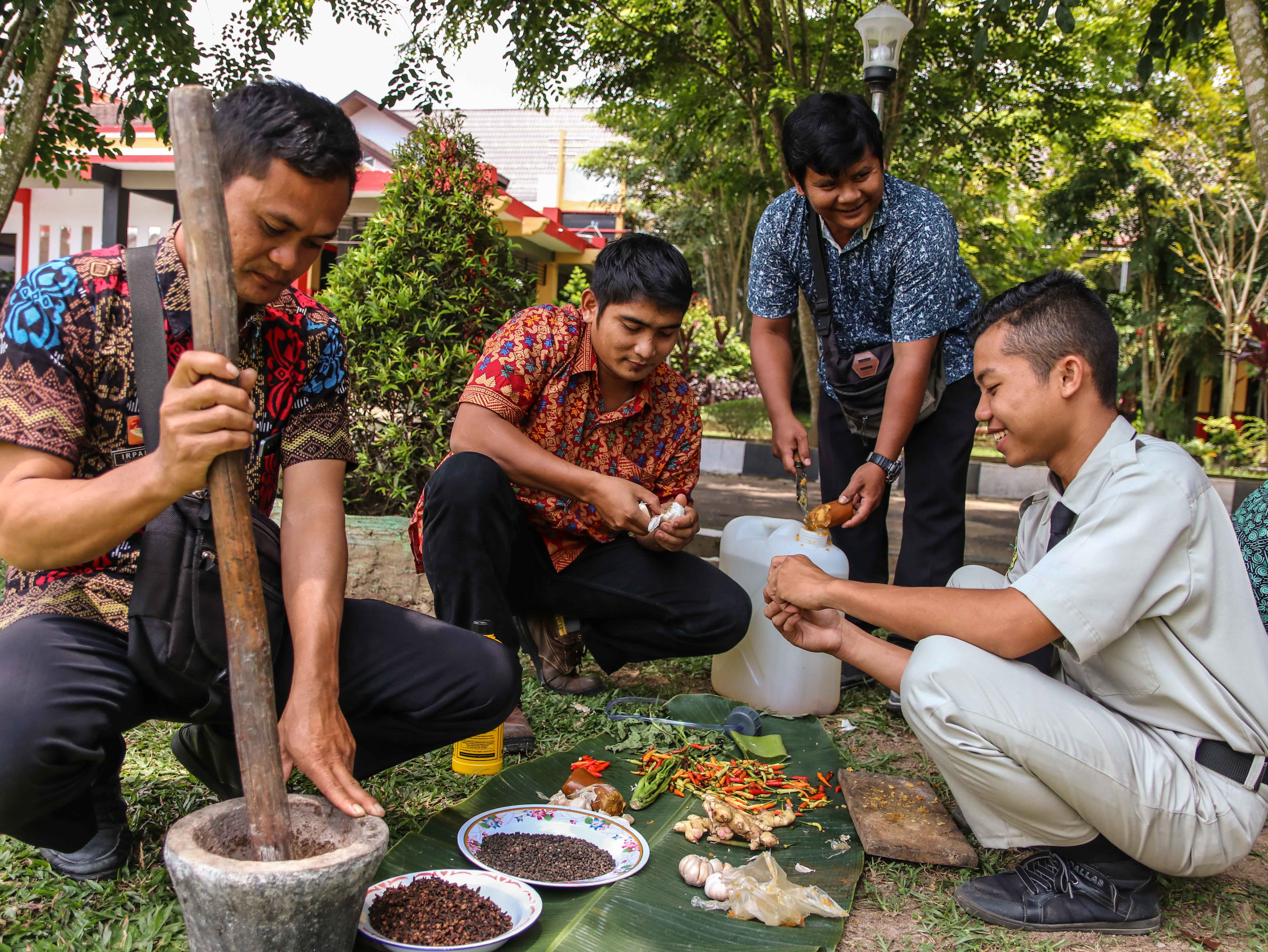A well-coordinated dissemination plan is crucial to amplifying impact. Through dissemination, knowledge and benefits from a lean experiment can be felt beyond the communities directly involved in the initiative, and if executed well, it could even lead to replication in other areas.
Last September, a team from Kopernik travelled to Sanggau district, West Kalimantan to share the results of our natural rat repellent experiment. To address crop losses caused by pests – a challenge in the area that was identified in our 2018 Unmet Needs Papua & Kalimantan report – we developed and tested a natural repellent formula in Penyeladi village, Sanggau district, West Kalimantan over the course of eight months. We set up a dissemination event in September to communicate the results to those who participated in the experiment as well as a wider audience who could benefit from the knowledge gained.
There are many components involved in organizing an effective dissemination event; one of which is in selecting the participants. Naturally, we invited the farmers from Penyeladi village who were directly involved in the project to join the workshops. Beyond that, we also invited farmers from nearby villages of Sekayam and Kapuas districts, local government officials, agriculture students and other relevant stakeholders. Our intention was to share the experiment results to others who may be facing similar challenges.

We shared the results through workshops which were held in two locations, at the Agriculture Assistance Office in Sekayam district and at the Sanggau regency office. During both events, we shared the natural rat repellent‘s experiment results and participants could also put the new knowledge they learned directly into practice by making the formula at the workshop with locally available ingredients.
The sun was bright and scorching that day but we saw great enthusiasm among participants when they were making the natural repellent. Participants were gathered in small groups and provided with the necessary ingredients to create the formula. Once the formula was made, the participants could take it home and apply it to their own rice fields.

The workshops were also a time of learning for us. Far from being passive, the participants were actively asking questions and offering feedback. One farmer, for instance, asked about alternative ingredients that are more easily found in their area or whether the formula is effective for other types of pests. These questions led to interesting discussions.
As the current formula for the natural rat repellent works through releasing a pungent smell from ingredients such as cloves and black pepper which keep away pests, we advised them to seek alternative natural ingredients which would add an equally strong smell to the formula. However, we still encouraged them to keep some of the key ingredients such as brown sugar, chilies, aloe vera and garlic when making the formula.

Representatives from local community groups chimed in, offering knowledge and past experiences in using natural pesticides. Meanwhile, agriculture students were eager to take the knowledge to their schools. They were curious to learn if natural repellents could provide an alternative solution to the pest problems, which have been exacerbated by an overuse of synthetic fertilizers. We also had the opportunity to discuss possible partnerships with local government officials and other relevant stakeholders.

At Kopernik, we believe that more experimentation is needed to find practical solutions that address persistent development challenges across various sectors including agriculture. We realize that beyond the testing phase, sharing results directly with key stakeholders on their own turf is important. Even in the digital age when information is easily available online, face-to-face meetings are still the most effective approach given the many limitations of digital channels such as technology access in the last mile. Sharing the information directly also opens the space for unexpected insights that can further customize a solution and improve future experiments.
Dissemination in not a one-way interaction, but is intended to encourage adoption. Thus, dissemination is an important part of an experiment as a means to transfer knowledge about tested solutions which could then be adopted by communities and improve their day-to-day lives. After all, a solution is only effective when it is actually known and considered to be useful by those it’s intended for.


